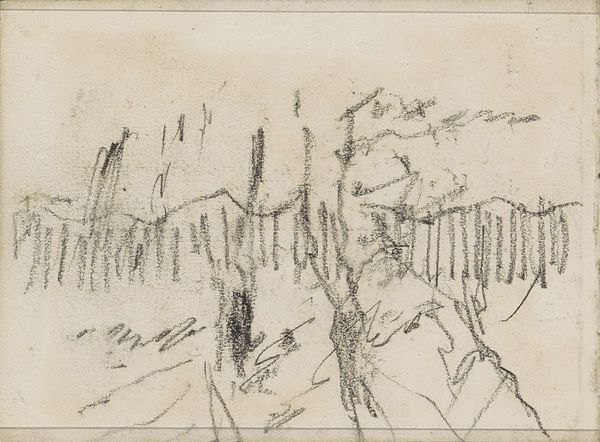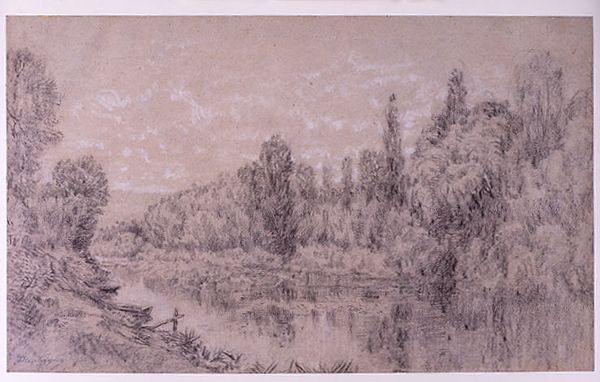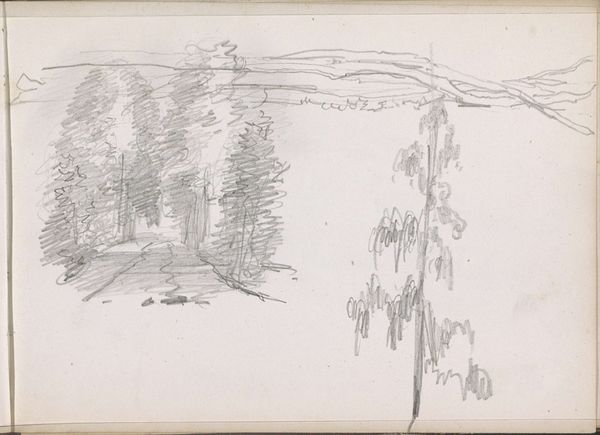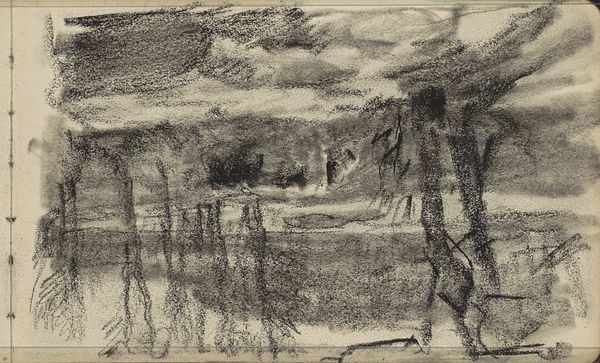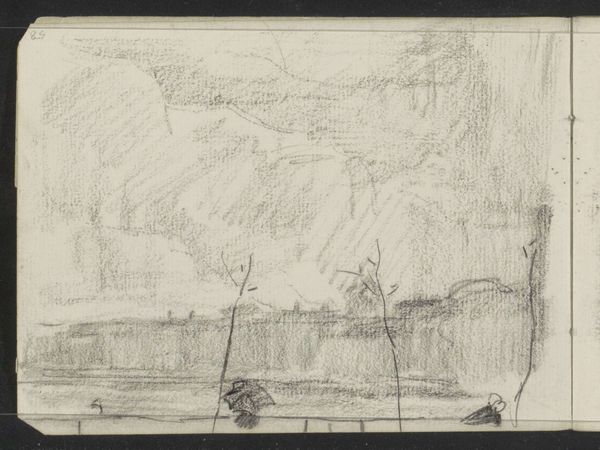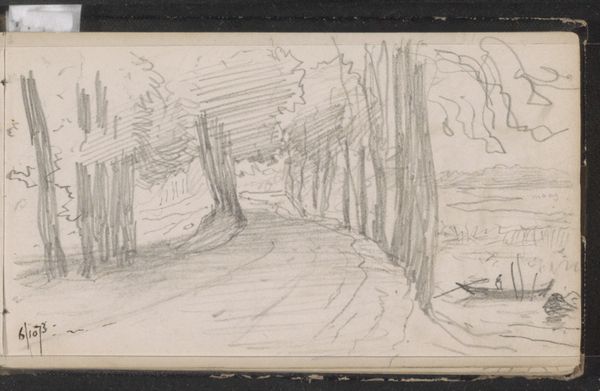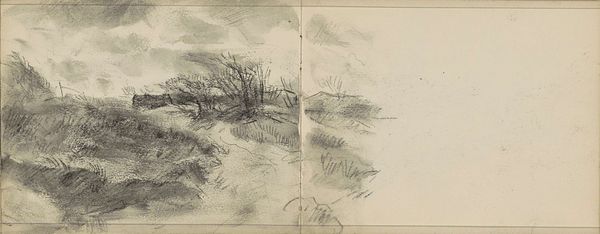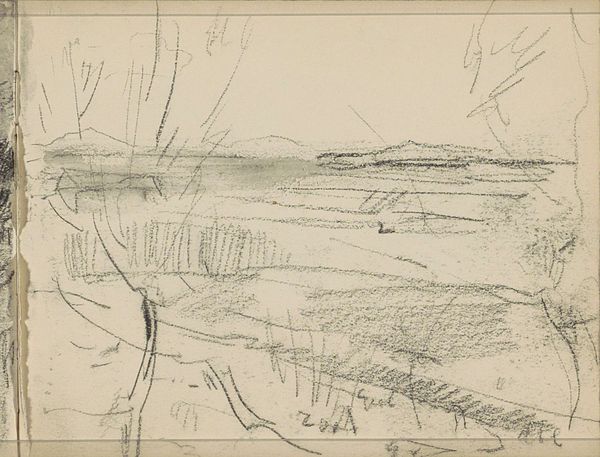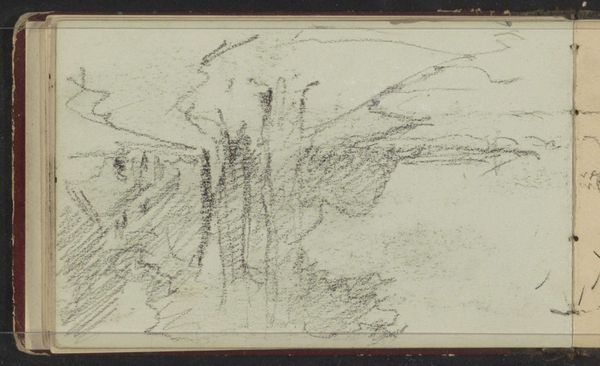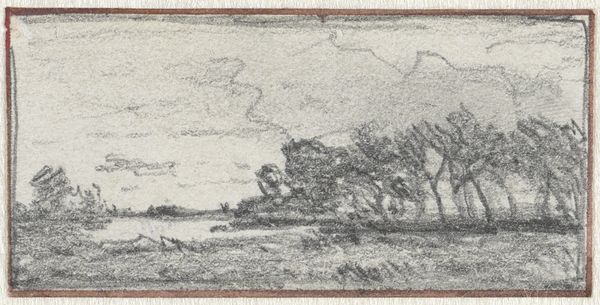
Dimensions: height 95 mm, width 154 mm
Copyright: Rijks Museum: Open Domain
Editor: This is "Landschap bij Beek," or "Landscape near Beek," by Willem Cornelis Rip, likely created sometime between 1892 and 1898. It's a drawing, a pencil sketch on paper. I'm immediately struck by its looseness, the unfinished quality...it feels so immediate, almost like a glimpse into the artist's mind. What captures your attention about this piece? Curator: That's a beautiful observation. The intimacy is what gets me, too. Think of Rip, outdoors, sketchbook in hand, capturing the essence of the scene. The very light pencil work, the suggestive lines rather than precise detail… It reminds me of trying to capture a fleeting dream before it vanishes. Notice how he uses shading to suggest depth, yet leaves so much to the imagination? Editor: It's interesting you say dreamlike. I was also thinking about memory, how we only hold onto fragments. Is that a fair association to make? Curator: Absolutely. This wasn’t meant to be a finished product, hanging in a salon. This was a personal record, a way of engaging with the world. Imagine Rip pausing on his walk. He notes the key elements— the shapes of the trees, the light filtering through leaves—and commits them to paper. Does that personal, sketchy feel give you any other thoughts or associations? Editor: I think it does feel very modern in a way. It’s not about capturing reality perfectly but something more like capturing the impression. Curator: Precisely! This leans toward the Impressionistic ethos. Capturing the feeling of a place, a moment, not just its literal appearance. I like the way it suggests the trees reflecting off a river too. What a dreamy fleeting moment to capture. Editor: I see that so clearly now, looking closer at those hazy shapes at the bottom. Thank you. It's amazing how much information and feeling can be conveyed with such simple lines. Curator: Exactly! That’s the magic of a sketch – a whispered secret on paper. And the way it can evoke a feeling, not just describe a scene… beautiful isn’t it?
Comments
No comments
Be the first to comment and join the conversation on the ultimate creative platform.

